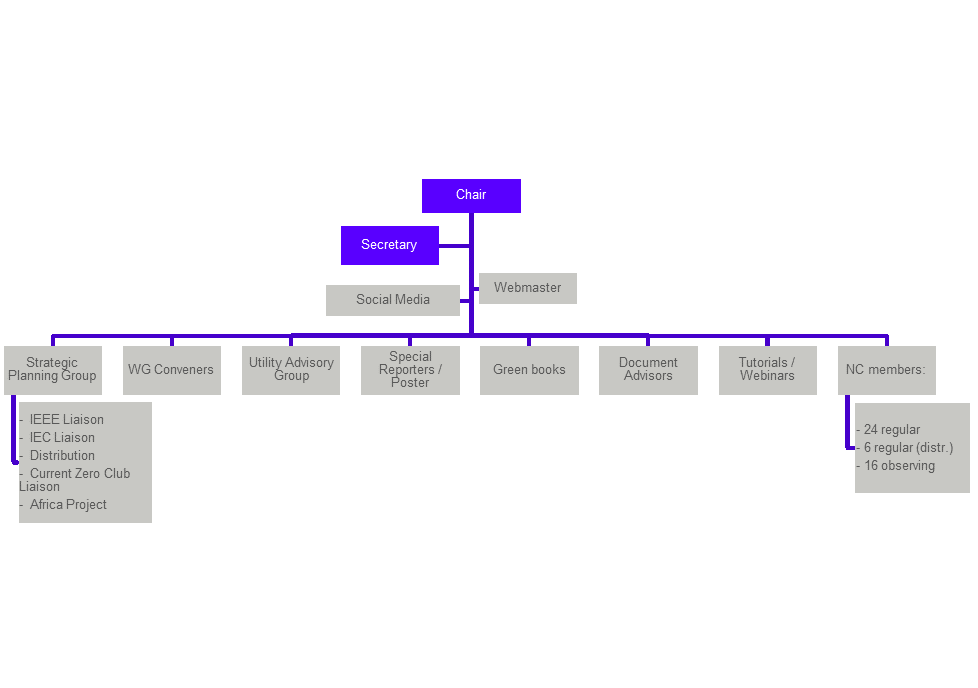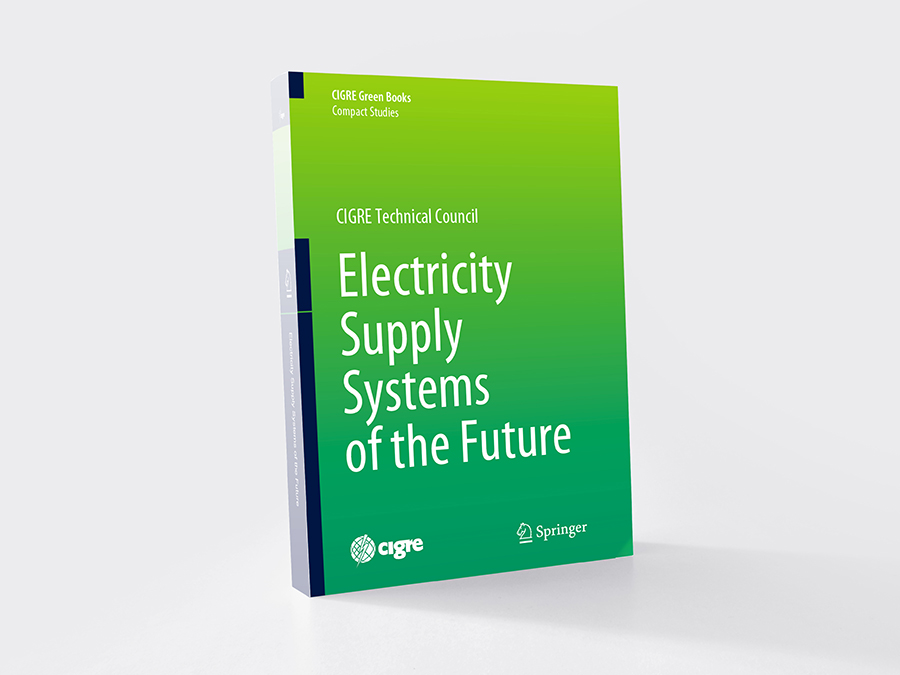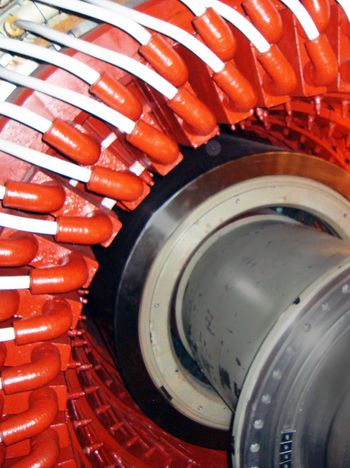Transmission and distribution equipment
by Nenad Uzelac, Chair, and Frank Richter, Secretary
The year 2020 was "different" not only for the CIGRE SC A3. It was supposed to be another year with many personal contacts and new impressions at the CIGRE session in Paris. We learned that people, who are actually close can be very far away and people who are usually far away can be very close. Using the media for online meetings became the daily standard. This also allowed the CIGRE SC A3 work to continue in a time of limited contact from the home offices and will be reported on here.
Despite all the limitations, the highlight was still the CIGRE e-session. The conversion to a complete online event took up a lot of capacity, but it was worth it. An interesting tutorial about future innovations and trends in T&D equipment was shown on the 24th of August. Over 300 participants were registered. Furthermore, there was the paper presentation over one and a half days (26. and 27.08.2020). Here, too, over 250 participants were present. The technical discussions that developed around the presentations were at a high level.
The SC meeting was also held in conjunction with the e-Session. The event was also divided into 2 days (August 25th and September 1st) to allow all participants to participate at normal times due to the time differences between the locations of the individual participants. Here the status of the work, future projects and topics for Working Groups were discussed.
The technological field of activity of SC A3 remains the same as in the past year and reflects the strategic 3D – Decentralisation, Decarbonisation and Digtalisation - objectives as follows:.
- Innovative design and technologies (e.g. DC circuit-breakers)
- Requirements for equipment in changing network conditions and environmental conditions
- Incorporation of intelligence into T&D equipment (e.g. controlled switching)
- Monitoring and diagnostics of transmission & distribution equipment
- New and improving testing techniques
- Reliability assessment and lifetime management of ageing equipment
- Difference of designs and requirements in T&D equipment
The structure (refer to picture 1) of the Study Committee has been adapted in order to be able to identify and react more quickly to trends and problems and to set up and complete Working Groups faster.

New structure of the Study Committee SC A3
The Utility Advisory Board (UAB) was formed during 2020 and had the first meeting in February 2020 in Switzerland. As mentioned in the beginning, Covid-19 pandemic not only influenced work within SC A3, but challenged the electricity sector at all, as one of the critical infrastructure workforces. Under the umbrella of the UAB experts of SC A3 summarized the impact of Covid-19 to system operators and electrical equipment manufacturers in a paper with the same title. The paper was published in CSE October 2020 issue.
Springer Handbook of Power Systems was completed by 16 SCs collaboration covering different subjects within their scopes. A3 contributed to the chapter on substation equipment.

The Green Book is available for purchase on our partner's website Springer.
If you are a CIGRE Member, please contact us to benefit from a 40% discount on your purchase.
Up to now, 22 utilities from 12 countries participated in the fourth CIGRE reliability survey on equipment such as circuit breakers (CB), disconnecting switches (DS) earthing switches (ES) and gas insulated switchgear (GIS) with the voltage ratings higher than or equal to 60 kV. The scope of the survey on instrumental transformers (IT) and metal oxide surge arresters (MOSA) covers the applications in conjunction with HV switching equipment. The survey also attempts to investigate HV and MV vacuum interrupters (VCB) and generator circuit breakers (GCB). The major failure frequency of CB and GIS generally shows better failure rates than those in the third survey. However, the background CB populations are significantly different between the third and fourth surveys due to new participants with large installations. SC A3 will establish a new WG and update the reliability statistics on different equipment at earliest opportunity.
Working Groups
In 2020 all the current Working Group (WG)/ Joint Working Group (JWG) activities related to SC A3 are listed in the table below.
Working Groups led by SC A3
WG A3.30 finished | Overstressing of HV substation equipment | A. Carvalho (BR) |
WG A3.31 | Non-conventional instrument transformers | F. Rahmatian (CA) |
WG A3.36 | Simulation for temperature rise test | M. Kriegel (CH) |
WG A3.38 finished | Capacitor bank switching in T&D systems | E. Dullni (DE) |
WG A3.39 | Field Experience of Surge Arresters | R. Le Roux (IL) |
WG A3.40 | Technical Requirements and Testing Recommendations for MV DC switching equipment at distribution levels | C. Heinrich (DE) |
WG A3.41 | Interrupting and switching performance with SF6 free switching equipment | R. Smeets (NL) |
WG A3.42 | Failure analysis and risk mitigation for recent incidents of AIS instrument transformers | H. J. A. Martins (BR) |
JWG A3.43 | Tools for lifecycle management of T&D switchgear based on data from condition monitoring systems | N. Gariboldi (CH) |
JWG A3 /A2/A1/B1.44 | Consequence of High Voltage Equipment operating exceeding highest system voltages | B. Rusek (GE) |
WG A3.45 | Methods for identification of frequency response characteristic of voltage measurement systems | E. Sperling (CH) |
WG A3.46 | Generator Circuit-Breakers: review of application requirements, practices, in-service experience and future trends | P. Novak (GE) |
Joint Working Groups led by other SC with active participation of SCA3
JWG B4/A3.80 | HVDC Circuit Breakers - Technical Requirements, Stresses and Testing Methods to investigate the interaction with the system | J. Cao (CN) |
JWG B4/A3 86 | Fault Current Limiting Technologies for DC Grids | Z. He (CN) |
JWG C4/A3.53 | Application Effects of Low-Residual-Voltage Surge Arresters in Suppressing Overvoltages in UHV AC Systems | J. He (CN) |
JWG B3/A3.59 New | Guidelines for SF6 end-of-life treatment of T&D equipment (>1kV) in Substations | G. Kachelriess (DE) |
The progresses of active WG’s managed by SC A3 are summarized below:
WG A3.30 finished its work. The TB 816 was published. The TB presents a review of recommended practices for detecting and mitigating potential overstress of substation equipment. The content is focused on identification of the different kinds of stresses affecting HV equipment, standardized stress limits, stress evaluation procedures, and utilities’ practices on how to work around the overstress in short-term planning or in system operation. Stress factors related to electrical, environmental, and operational causes are considered and are compiled in a risk matrix, including cross-referencing the stress factors with the relevant equipment standards. The WG was disbanded.
WG A3.31 will provide guidelines on non-conventional instrument transformers, especially focusing on testing, calibration and communication. The Working Group will complete its work in 2021 and publish the results in an Electra paper.
WG A3.36 is investigating simulation tools focusing on temperature rise tests by following up on the activity of WG A3.24. The WG discussed the electromagnetic phenomena, such as joule losses, skin effect and proximity effect, and thermal phenomena, including conduction, convection and radiation, which are considered in today’s multi-physics simulations. In 2016 two benchmark devices were designed and manufactured to reproduce those physical phenomena in a typical MV and HV arrangement. In 2018 temperature rise tests have been performed on both devices. In 2019 the results of the multi physics simulations that are done on the benchmark devices were compared against the test results. The differences of the different simulations as well as the differences to the test results were discussed and analysed. The publication is shortly before publication.
WG A3.38 has finished their work. The results are shown in TB 817. The TB summarises the state of the art of shunt capacitor switching in distribution and transmission systems including filter banks. A comparison of the switching performance verified in type tests and the actual performance in service is content of the TB. A survey was carried out to collect experience of users with different switching devices in different applications, and the trends in the use of capacitors in changing networks. The WG was disbanded.
WG A3.39 is collecting field experience with Metal Oxide Surge Arresters (MOSA), focusing on the reliability issues on system and equipment since they have a function to protect other equipment in the substation. The WG clarifies consistency of design and testing requirements for MOSA’s based on field experience. A reliability survey can help to understand how actual field stresses can be covered by the requirements on MOSA’s, including the consequences of short-circuit. The WG will also cover reliability of MOSA in HVDC applications. A detailed reliability survey on MOSA and other equipment was drawn up and distributed to various utilities. Results are received and compiled for inclusion in TB. The TB is expected to be delivered in 2021.
WG A3.40 was established in 2018 and is investigating the technical requirements and testing consideration that will help to develop efficient and reliable MVDC switches and circuit breakers.
WG A3.41 was also established in 2018. The WG collects information and technical background focusing on the interrupting and switching performance with SF6-free switching equipment and investigate these capabilities during the expected lifetime under typical switching conditions. The impact of the application of new gas mixtures on utility life time management, testing and standardisation is addressed. The status of relevant products and pilots in MV and HV switchgear is given. In addition, the technical feasibility and actual application of HV circuit breakers will be addressed. The TB is expected to be delivered in 2021.
WG A3.42 was the third Working Group established in 2018. The content of the WG is to study the frequency and detailed phenomena of the major incidents of conventional instrument transformers, and provide the possible causes analysis, countermeasures, adequate diagnostic techniques and recommendation for improvement. The WG may also suggest additional type testing and routine testing requirements of instrument transformers to reduce the possibility of incidents.
WG A3.43 started to work end of 2018. This WG focuses on what to do with the data collected from diagnostic activity and monitoring systems to assess the switchgear condition and estimate its end of life. The WG will collect and analyse the voluntary information provided by utilities and manufacturers about how the end-of-life of T&D switchgear is estimated. The WG has a close cooperation with B3.48 dealing with health index for substation to be in line with their concept. The final target is having a toolbox to enhance the use of monitoring and diagnostic data in a shared and more comprehensive way to reach a quantitative description of the current state of the switchgear condition.
JWG A3/A2/A1/B1.44 was established in 2019 and will investigate the consequence for the electrical equipment of situations in the transmission and distributions systems in which the operating voltage can temporarily exceed the highest voltage for the equipment (Um).
WG A3.45, also founded in 2019, will investigate methods for identification of frequency response characteristic of voltage measurement systems. Due to the change in energy production the influence on the power quality of the energy is given. Continuous voltage signals beginning from DC as an offset up to several 10 kHz can appear. For transient voltage signals, the resulting frequency may be in the range from 0.5 MHz up to 10 MHz. The relevant instrument voltage transformers based on the conventional technology as well as on the non-conventional low power technologies (both analogue and digital) will be analysed and categorized. Discussions about physical dependencies and influences on the accuracy will be made.
WG A3.46 is the third WG that started in 2019, and is the first Working Group that deals with the topic Generator Circuit-Breaker in general. Therefore, the topic of the WG is quite broad and covers the history, the current state of the art and possible future applications. The aim is to give users a “cookbook” when dealing with subjects, such as among others typical network layouts of different power plant types, case studies for short-circuit calculation or voltage transients, protection systems, heat dissipation with busbar dimensioning isolated phase busbars, requirements for fabrication and site acceptance tests, condition monitoring and life cycle analysis. Additional experiences on requirements and their background of generator circuit breakers with its combined equipment of earthing-, starting- and breaking switch, as well as their technologies and testing possibilities shall be given.
In addition to the work of the Working Groups, SC A3 has continued its work on a new reliability survey. The first results were presented. Further data from utilities have been requested and are expected in 2021.
Events
Finally, an outlook on the further SC A3 events will be given. The highlight in 2021 will be – of course – the Paris Session on the occasion of the 100th Anniversary of CIGRE in August, where the main work of the SC will focus on. After 2020 SC A3 is planning the following future events.
- CIGRE SC A3 colloquium or Joint events with other SCs, 2021; New Delhi India
- CIGRE SC A3 & D1 colloquium, 2021 or 2023 Moscow Russia (planned not finally fixed)
- CIGRE SC A3 & B3 colloquium, 2023, United States (planned not finally fixed)
Detailed information about upcoming and past events and activities are published on the newly designed webpage.
The current events and highlights can be followed on LinkedIn.
